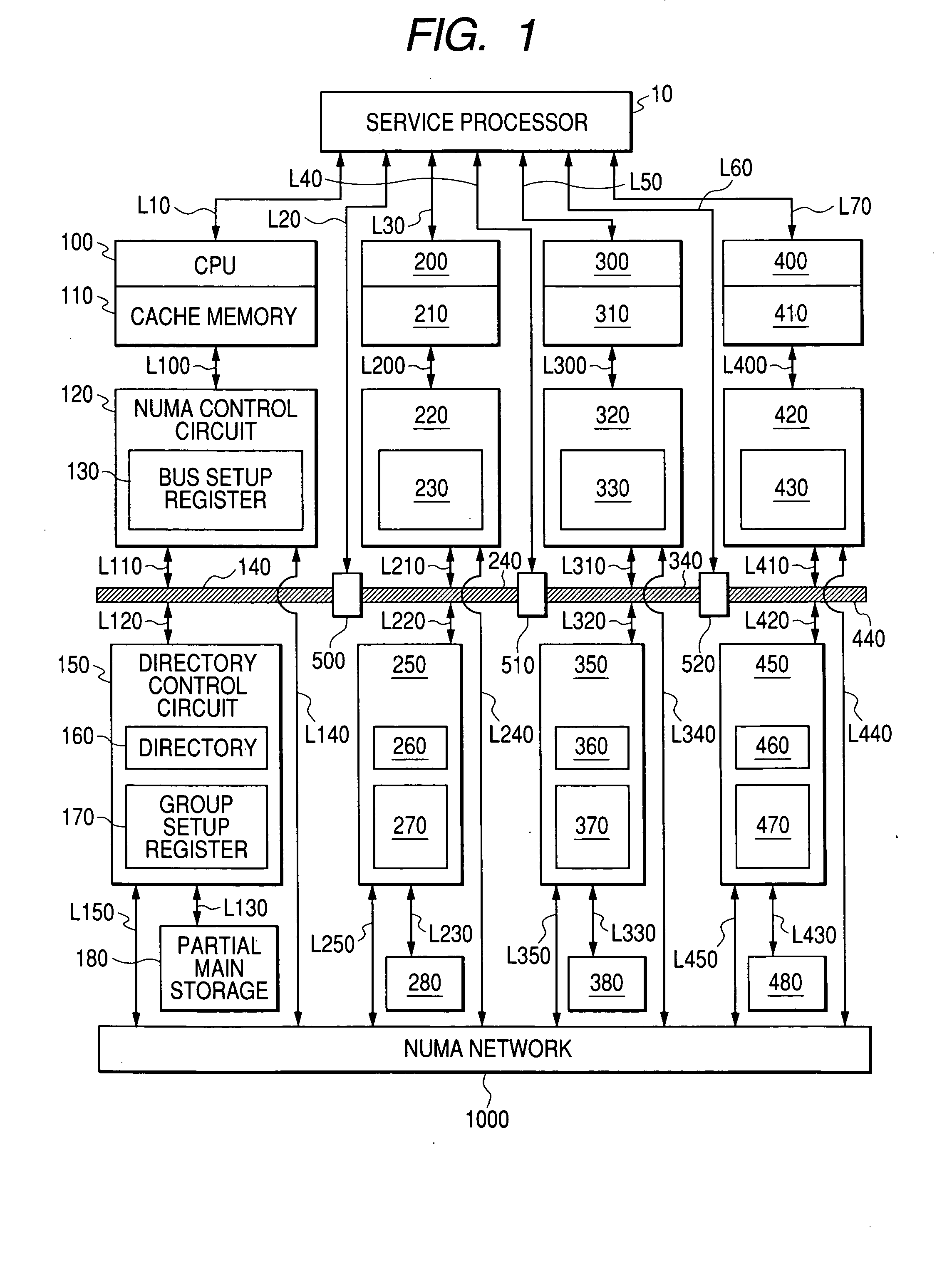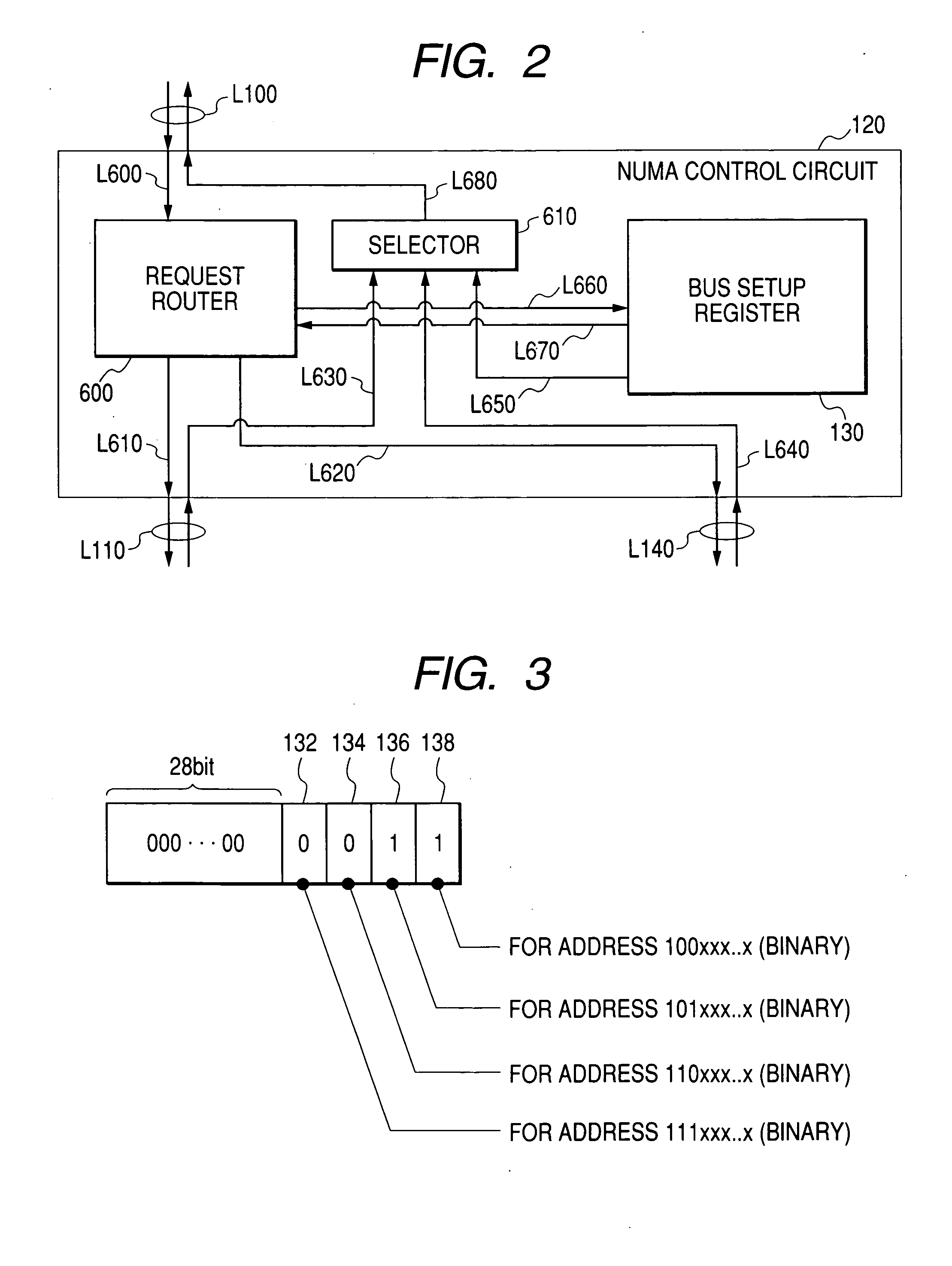Multiprocessor system
a multi-processor system and cache memory technology, applied in the direction of memory adressing/allocation/relocation, instruments, digital computers, etc., can solve the problem of coherence control of cache memories, so-called cache coherence control, and slow memory access latency during access from a cpu to a main storage. problem, the effect of reducing the number of caches
- Summary
- Abstract
- Description
- Claims
- Application Information
AI Technical Summary
Benefits of technology
Problems solved by technology
Method used
Image
Examples
embodiment 1
[0030] The operation of a multiprocessor system according to the present invention is outlined below first, and then the operation of this multiprocessor system is detailed below in the following order: [0031] (1) Coherence control through a bus [0032] (2) Coherence control through a NUMA network [0033] (3) Bus connecting change process
[Operational Outline]
[0034] Using FIG. 1, this section outlines the operation of the multiprocessor system according to the present invention. The description below assumes that bus splitting / connecting circuits 500, 510, and 520 are initially set so that the circuits 500 and 520 are in a connected state and, the circuit 510, in a split state. In other words, it is to be assumed that although CPUs 100 and 200 are bus-connected and CPUs 300 and 400 are also bus-connected, the two sets of CPUs themselves are isolated from each other.
[0035] In this state, a cache coherence request issued from, for example, the CPU 100 can be transmitted to the CPU 200...
embodiment 2
[0106] Although Embodiment 1 presupposes the existence of a special NUMA network 1000 for NUMA control, Embodiment 2 described below assumes that packets for the NUMA protocol are also executed via a bus, instead of the NUMA network 1000.
[0107] A system configuration of Embodiment 2 is shown in FIG. 14. Three differences from the configuration of Embodiment 1 as shown in FIG. 1 exist.
[0108] A first difference exists in that the bus splitting / connecting circuits 500, 510, and 520 are substituted by pass filter circuits 505, 515, and 525, respectively. For packets other than NUMA control packets, the pass filter circuits 505, 515, and 525 function similarly to the bus splitting / connecting circuits 500, 510, and 520. In other words, depending on its setting by the service processor 10, each pass filter circuit permits or prohibits passage of a packet. However, packets for NUMA control are always permitted to pass.
[0109] A second difference is as follows: in Embodiment 1, a fetch req...
PUM
 Login to View More
Login to View More Abstract
Description
Claims
Application Information
 Login to View More
Login to View More - R&D
- Intellectual Property
- Life Sciences
- Materials
- Tech Scout
- Unparalleled Data Quality
- Higher Quality Content
- 60% Fewer Hallucinations
Browse by: Latest US Patents, China's latest patents, Technical Efficacy Thesaurus, Application Domain, Technology Topic, Popular Technical Reports.
© 2025 PatSnap. All rights reserved.Legal|Privacy policy|Modern Slavery Act Transparency Statement|Sitemap|About US| Contact US: help@patsnap.com



